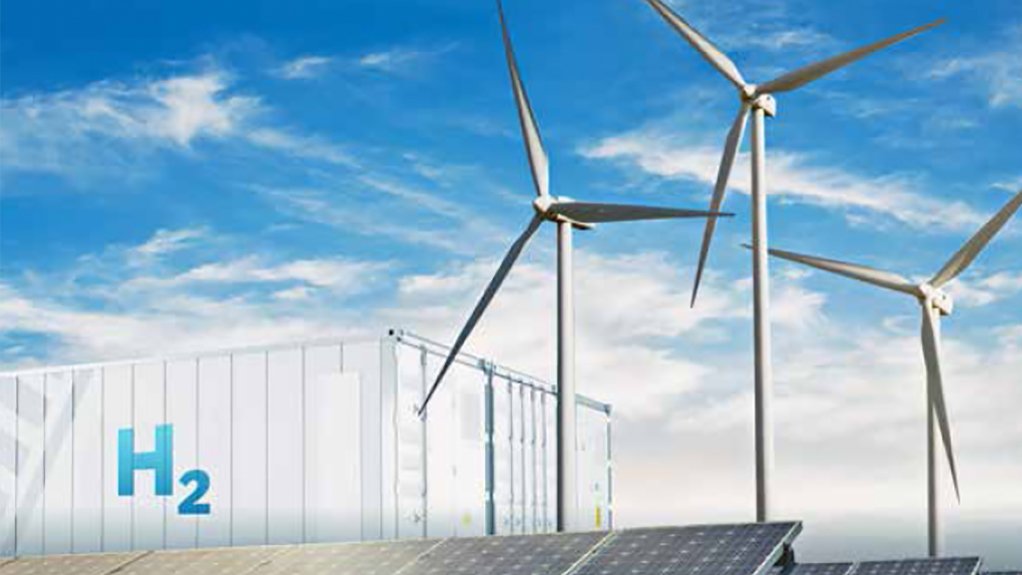(Mining Weekly, Tues. Sep. 8th, 2020) –

JOHANNESBURG (Mining Weekly, Tues. Sep. 8th, 2020) – ) – The hydrogen economy is elevating platinum as a precious metal with long-term store of value, the World Platinum Investment Council (WPIC) said today.
The latest edition of WPIC’s Platinum Quarterly states that an evolving global sea-change in the environment debate may also be at play in changing investor sentiment towards platinum, significantly bolstering platinum’s green and precious metal credentials.
Platinum’s role in unlocking the hydrogen economy heralds for it a robust basis as a long-term store of value. With the economic impact of the Covid-19 pandemic depleting climate change funding, there has been growing impetus from China, Japan, South Korea, the EU and the US to prioritise the ‘hydrogen economy’ in cost-effectively driving forward the green agenda.
On July 8, the EU implemented its hydrogen strategy, highlighting the crucial role hydrogen will play in decarbonising industry, transport, power generation and buildings across Europe. As increasing numbers of national governments recognise that the use of hydrogen as a fuel for primary power and transportation is one of the most cost-effective and sustainable routes to a better climate future, platinum’s key catalytic role to help facilitate the hydrogen economy is becoming known. Not only is platinum key to the generation of green hydrogen, but it is also used in fuel cells for fuel cell electric vehicles (FCEVs). As the hydrogen economy and the FCEV market grow, it will create significant demand for platinum.
Clean air experienced during the pandemic has given the world a glimpse of what could be possible if air quality and climate change are successfully addressed. However, the negative economic impacts of Covid could further impede efforts in this regard, with less funding available.
However, as the global crisis has unfolded one key development that has gained momentum is the growth of the ‘hydrogen economy’.
Increasing numbers of national governments are recognising – through tangible strategies, policies and initiatives – that the use of hydrogen as a fuel for primary power and transportation is one of the most cost-effective and sustainable routes to a better climate future.
Platinum sits in the sweet spot for facilitating the hydrogen economy owing to its use in generating green hydrogen and also hydrogen in fuel cells for FCEVs. FCEV growth is currently being led by buses, heavy-duty trucks and trains, with passenger cars a longer-term prospect. As the hydrogen economy and the FCEV market grows, it will create significant demand for platinum; this provides a robust basis as a long-term store of value.
Another pandemic-driven development beneficial to platinum is the desire to continue the transition away from internal combustion engine (ICE) vehicles to electric ones – both battery and fuel cell. The ongoing squeeze on public funds and the ensuing lack of funding for infrastructure, such as electricity grid capacity expansion and charging points, makes it essential to reduce carbon dioxide (CO2) from ICE vehicles at the lowest overall cost. Fortunately, automakers in Europe have been preparing the technical changes to reduce new vehicle CO2 emissions for several years. In 2020, we are likely to see increased platinum demand as automaker CO2 reduction strategies include the wide range of diesel and diesel hybrid vehicles already on sale and which have higher platinum loadings.
Despite the fall in metal prices in mid-March, palladium has remained at a significant premium to platinum, still over $1 000/oz, maintaining impetus for the use of platinum in place of palladium in gasoline and diesel autocatalysts.
During previous disconnects between the price of the two metals, the use of platinum to replace palladium balanced the two markets. Understandably, automakers and autocatalyst manufacturers have not published details of the extent to which platinum is currently being used to replace palladium – it is proprietary and confidential information and publication would risk increasing the platinum price. We believe that the amount is greater than limited public information might suggest, and that this process is likely to continue and grow during and after the pandemic.
SIGNS OF RECOVERY BY SECTOR
While Covid has disrupted platinum supply and demand, market segments where platinum demand remained surprisingly resilient were the:
- jewellery sector, with US platinum jewellery imports in June being more than five times the size of those in May;
- automotive sector, with second-quarter automotive demand for platinum in China surging 62% to an additional 31 000 oz, when 25% of above 6 t heavy-duty vehicles produced were fitted with a China VI-compliant emission control system;
- chemical sector, with platinum demand robust for Covid-related silicone products used in medical, health, hygiene and home care applications;
- medical sector, with pharmaceutical boosts in India and China; and
- glass sector, with second-quarter glass demand up 15% to 82 000 oz for monitor and laptop panels, boosted as working from home proliferated.
WPIC’s members are Anglo American Platinum, Impala Platinum, Northam Platinum and Royal Bafokeng Platinum.
Posted by :
Jack Dempsey, President
401 Gold Consultants LLC
jdemp2003@gmail.com

